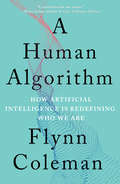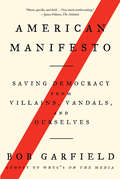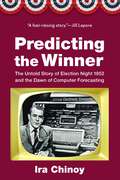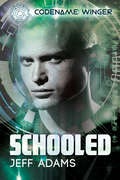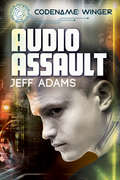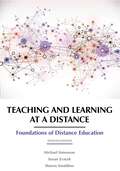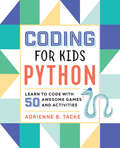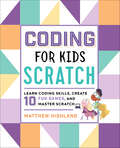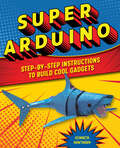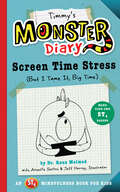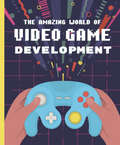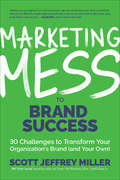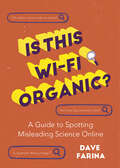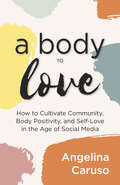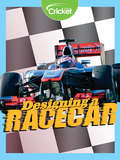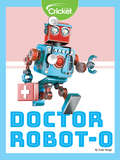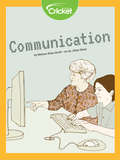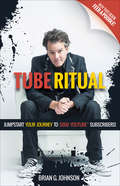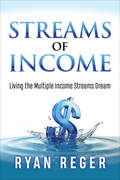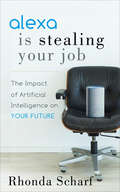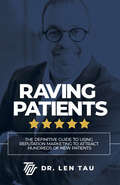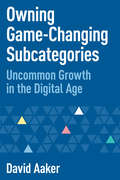- Table View
- List View
A Human Algorithm: How Artificial Intelligence Is Redefining Who We Are
by Flynn ColemanA groundbreaking narrative on the urgency of ethically designed AI and a guidebook to reimagining life in the era of intelligent technology.The Age of Intelligent Machines is upon us, and we are at a reflection point. The proliferation of fast–moving technologies, including forms of artificial intelligence akin to a new species, will cause us to confront profound questions about ourselves. The era of human intellectual superiority is ending, and we need to plan for this monumental shift.A Human Algorithm: How Artificial Intelligence Is Redefining Who We Are examines the immense impact intelligent technology will have on humanity. These machines, while challenging our personal beliefs and our socioeconomic world order, also have the potential to transform our health and well–being, alleviate poverty and suffering, and reveal the mysteries of intelligence and consciousness. International human rights attorney Flynn Coleman deftly argues that it is critical that we instill values, ethics, and morals into our robots, algorithms, and other forms of AI. Equally important, we need to develop and implement laws, policies, and oversight mechanisms to protect us from tech’s insidious threats.To realize AI’s transcendent potential, Coleman advocates for inviting a diverse group of voices to participate in designing our intelligent machines and using our moral imagination to ensure that human rights, empathy, and equity are core principles of emerging technologies. Ultimately, A Human Algorithm is a clarion call for building a more humane future and moving conscientiously into a new frontier of our own design.“[Coleman] argues that the algorithms of machine learning––if they are instilled with human ethics and values––could bring about a new era of enlightenment.” —San Francisco Chronicle
American Manifesto: Saving Democracy from Villains, Vandals, and Ourselves
by Bob GarfieldDo you fear for our democracy? Are you perplexed by Trumpism? Are you ready to throw in the towel? Don’t! This is your guidebook to reassembling our hyperpolarized American society in six (not–so–easy) steps, written by cohost of WNYC's On the Media Bob GarfieldAs is often observed, Trump is a symptom of a virus that has been incubating for at least fifty years. But not often observed is where the virus is imbedded: in the psychic core of our identity. In American Manifesto: Saving Democracy from Villains, Vandals, and Ourselves, popular media personality Bob Garfield examines the tragic confluence of the American preoccupation with identity and the catastrophic disintegration of the mass media. Garfield investigates how we’ve gotten to this moment when our identity is threatened by both the left and the right, when e pluribus unum is no longer a source of national pride, and why, when looking through this lens of identity, the rise of Trumpism is no surprise. Overlaying this crisis is the rise of the Facebook–Google duopoly and the filter bubble of social media, where identity is insular and immutable.But fear not! WNYC’s On the Media cohost Garfield has ideas about how we may counter the forces of fragmentation—the manifesto itself: six steps to take to reassemble our fractured society. A quick, fascinating read, American Manifesto offers not only a vision of a country in extremis, but also a plan for how to address the ways in which our democracy is imperiled. Provocative, profound, and sometimes hilariously profane, American Manifesto is a call to action like no other.
Predicting the Winner: The Untold Story of Election Night 1952 and the Dawn of Computer Forecasting
by Ira ChinoyThe history of American elections changed profoundly on the night of November 4, 1952. An outside-the-box approach to predicting winners from early returns with new tools—computers—was launched live and untested on the newest medium for news: television. Like exhibits in a freak show, computers were referred to as &“electronic brains&” and &“mechanical monsters.&” Yet this innovation would help fuel an obsession with numbers as a way of understanding and shaping politics. It would engender controversy down to our own time. And it would herald a future in which the public square would go digital. The gamble was fueled by a crisis of credibility stemming from faulty election-night forecasts four years earlier, in 1948, combined with a lackluster presentation of returns. What transpired in 1952 is a complex tale of responses to innovation, which Ira Chinoy makes understandable via a surprising history of election nights as venues for rolling out new technologies, refining methods of prediction, and providing opportunities for news organizations to shine. In Predicting the Winner Chinoy tells in detail for the first time the story of the 1952 election night—a night with continuing implications for the way forward from the dramatic events of 2020–21 and for future election nights in the United States.
ICD-10-CM 2023: The Complete Official Codebook
by American Medical AssociationICD-10-CM 2023: The Complete Official Codebook provides the entire updated code set for diagnostic coding, organized to make the challenge of accurate coding easier. This codebook is the cornerstone for establishing medical necessity, correct documentation, determining coverage and ensuring appropriate reimbursement. Each of the 22 chapters in the Tabular List of Diseases and Injuries is organized to provide quick and simple navigation to facilitate accurate coding. The book also contains supplementary appendixes including a coding tutorial, pharmacology listings, a list of valid three-character codes and additional information on Z-codes for long-term drug use and Z- codes that can only be used as a principal diagnosis. Official 2023 coding guidelines are included in this codebook.
ICD-10-PCS 2023: The Complete Official Codebook
by American Medical AssociationICD-10-PCS 2023: The Complete Official Codebook contains the complete ICD-10-PCS code set and supplementary appendixes required for reporting inpatient procedures. This illustrated codebook presents the code set in 17 sections of tables arranged by general procedure type. Tables within the extensive Medical and Surgical section are additionally sectioned out by body system, indicated by color-coded page borders. ICD-10-PCS contains classifications for procedures, devices, and technologies.
Schooled (Codename: Winger #2)
by Jeff AdamsTheo Reese is a high school student who’s also a secret agent. Usually those lives are kept separate, but now he must be both at once. <p><p> Theo lends his expertise to his school’s computer science club as they gear up for a competition, but his talents are also required by the covert agency he works for. Someone has stolen an encrypted key that can allow them to control the nation’s energy grids. The possibilities are catastrophic unless Theo and his team can reclaim the file. <p> Theo locates the file in an unexpected place—the computer science competition. As Winger, his secret identity, he must recover the file and keep his teammates safe from the unscrupulous thieves…. But can he do it without revealing his secrets? He can’t blow his cover, especially with so many of his classmates around.
Audio Assault. (Codename: Winger #3)
by Jeff AdamsCodename: Winger: Book ThreeFor teenage secret agent Theo Reese, summer break isn’t a time to relax. In addition to his duties for Tactical Operational Support, Theo’s got a school project and, more than anything, wants to spend time with his boyfriend, Eddie. A family trip to New York City is the last thing Theo needs. But a friend of Theo’s father is in need of the Reese family’s special skills. Oliver Glenwood heads a music empire, and his daughter, Sofia, is a rising pop star—one who’d drawn the attention of kidnappers. During the investigation, Theo discovers the threat poses more danger than originally suspected. Someone has planted code in Glenwood Music’s songs that can steal information from any personal device—or play a tone that can rouse uncontrollable rage. The consequences will be disastrous if the infected songs are downloaded by the public. Preventing worldwide catastrophe becomes even more difficult when Eddie arrives in the city, hoping to spend some quality time with Theo. No one ever said being a covert agent would be easy.
Teaching and Learning at a Distance: Foundations of Distance Education
by Susan Zvacek Sharon E. Smaldino Michael R. SimonsonTeaching and Learning at a Distance is written for introductory distance education courses for preservice or in- service teachers, and for training programs that discuss teaching distant learners or managing distance education systems. This text provides readers with the basic information needed to be knowledgeable distance educators and leaders of distance education programs. The teacher or trainer who uses this book will be able to distinguish between appropriate uses of distance education. <p><p>In this text we take the following themes: The first theme is the definition of distance education. Before we started writing the first edition of Teaching and Learning at a Distance we carefully reviewed the literature to determine the definition that would be at the foundation of our writing. This definition is based on the work of Desmond Keegan, but is unique to this book. This definition of distance education has been adopted by the Association for Educational Communications and Technology and by the Encyclopedia Britannica. <p><p>The second theme of the book was the importance of research to the development of the contents of the book. The best practices presented in Teaching and Learning at a Distance are validated by scientific evidence. Certainly there are “rules of thumb”, but we have always attempted to only include recommendations that can be supported by research. <p><p>The third theme of Teaching and Learning at a Distance is derived from Richard Clark’s famous quote published in the Review of Educational Research that states that media are mere vehicles that do not directly influence achievement. Clark’s controversial work is discussed in the book, but is also fundamental to the book’s advocacy for distance education – in other words, we authors did not make the claim that education delivered at a distance was inherently better than other ways people learn. Distance delivered instruction is not a “magical” approach that makes learners achieve more. <p><p>The fourth theme of the book is equivalency theory. Here we presented the concept that instruction should be provided to learners that is equivalent rather than identical to what might be delivered in a traditional environment. Equivalency theory helps the instructional designer approach the development of instruction for each learner without attempting to duplicate what happens in a face to face classroom. <p><p>The final theme for Teaching and Learning at a Distance is the idea that the book should be comprehensive – that it should cover as much of the various ways instruction is made available to distant learners as is possible. It should be a single source of information about the field.
Coding for Kids: Learn to Code with 50 Awesome Games and Activities
by Adrienne B. TackeGames and activities that teach kids ages 10+ to code with Python Learning to code isn't as hard as it sounds—you just have to get started! Coding for Kids: Python starts kids off right with 50 fun, interactive activities that teach them the basics of the Python programming language. From learning the essential building blocks of programming to creating their very own games, kids will progress through unique lessons packed with helpful examples—and a little silliness! Kids will follow along by starting to code (and debug their code) step by step, seeing the results of their coding in real time. Activities at the end of each chapter help test their new knowledge by combining multiple concepts. For young programmers who really want to show off their creativity, there are extra tricky challenges to tackle after each chapter. All kids need to get started is a computer and this book. This beginner's guide to Python for kids includes: 50 Innovative exercises—Coding concepts come to life with game-based exercises for creating code blocks, drawing pictures using a prewritten module, and more. Easy-to-follow guidance—New coders will be supported by thorough instructions, sample code, and explanations of new programming terms. Engaging visual lessons—Colorful illustrations and screenshots for reference help capture kids' interest and keep lessons clear and simple. Encourage kids to think independently and have fun learning an amazing new skill with this coding book for kids.
Coding for Kids: Learn Coding Skills, Create 10 Fun Games, and Master Scratch
by Matthew HighlandLearn to code awesome games with Scratch—a fun starter guide for kids 6 to 10Explore basic coding concepts and skills and start creating your own games right away! Coding for Kids: Scratch is a complete guide that makes mastering the Scratch programming language fun and easy for kids.From sprites and code blocks to scripts and scorekeeping, Coding for Kids: Scratch helps you discover everything you need to know to create 10 amazing games that you and your friends can play. Watch your confidence grow with step-by-step instructions and clear directions that keep things simple—even as the games you're making get more challenging. Game on!Coding for Kids: Scratch includes:Coding for kids—Learn Scratch terms and concepts, then use them to build games you can start playing immediately.Create 10 games—Cake Clicker, Dino Hunt, Crystal Keeper, and more—code, play, and share 10 cool games.Master Scratch—Simple directions, full-color screenshots, and projects that get more difficult make practicing Scratch a breeze.Make coding for kids fun and games with Coding for Kids: Scratch.
Super Arduino: Step-by-Step Instructions to Build Cool Gadgets
by Kenneth HawthornGeek out—amazing gadget projects for Arduino beginners. Welcome to the wonderful wired world of Arduino—the flexible open-source electronics platform for creators. Become a coding superhero with Super Arduino—the easiest step-by-step, project-based guide for beginners who want to learn the latest tips and tricks while taking their DIY programming skills to the next level. Let your engineering imagination run wild. In this Arduino project workbook, you'll learn how to create great gadgets like a fabulous flag-waver, flashing disco shoes, a crazy clock, flip-a-switch with Wi-Fi, and even an echolocation distance sensor—like a bat! So what are you waiting for? Plug into Super Arduino and get the following: Calling all coders—Explore these easy-to-follow programming sketches specifically designed for Arduino beginners. Ignite your imagination—You'll make wired wearables, crazy costumes, and even home gadgets using step-by-step Arduino projects that build your skills—and coding confidence. Full-color format—From start to finish, four-color sketch images will help guide you. If you can dream it, there's a good chance you can build it—with this awesome Arduino beginner's guide.
Timmy's Monster Diary: Screen Time Stress (But I Tame It, Big Time) (Monster Diaries #2)
by Raun Melmed Annette SextonMeet Timmy, a lovable monster who can’t get enough of the coolest gadgets and video games. Too bad he doesn’t realize how much time he spends each day in front of a screen. In the same humorous spirit of Diary of a Wimpy Kid comes Timmy’s Monster Diary: Screen Time Stress. Using the “Time-Telling” and “ST4” techniques developed by Dr. Raun Melmed of the Melmed Center in Arizona, Timmy’s Monster Diary teaches kids how to self-monitor the amount of time they spend on technology. Timmy’s hilarious doodles and diary entries chronicle his delightful adventures, misadventures, and eventual triumph in a funny, relatable way. It’s the one book that kids will want to turn off the TV and read! Timmy’s Monster Diary also includes a resource section to help parents and teachers implement Dr. Melmed’s methods, plus ST4 reminders that kids can remove, color, and place around the house. Ages 6–12 Don’t miss Marvin’s ADHD adventures in Book 1.
The Amazing World of Video Game Development
by Denis GalaninThe perfect book for any child who is interested in making a career out of video games, learn about the different roles within a game development company and how a game goes from a thought to a program.
Marketing Mess to Brand Success: 30 Challenges to Transform Your Organization's Brand (and Your Own) (Mess to Success)
by Scott Jeffrey MillerFrom the Wall Street Journal–bestselling author, &“the perfect roadmap for anyone looking to build their brand&” (Marie Forleo, #1 New York Times–bestselling author of Everything Is Figureoutable). In Scott Miller&’s newest Mess to Success guide, the FranklinCovey senior advisor reveals thirty career obstacles that you may encounter in your brand marketing, and how to transform them into company wide gains. In thirty chapters, Marketing Mess to Brand Success shares a career&’s worth of valuable lessons learned, such as &“A Name is Not a Lead&” and &“Hire People Smarter Than You.&” Fast-track your career and success with the mentality of bruising hard, but healing fast. Whether you&’re an entrepreneur starting a new company; a brand manager figuring out the best direct marketing strategy or brand positioning for a niche market; or an aspiring marketing manager, this book is designed to prepare you for many of the inevitable challenges you will encounter. Learn to: · Navigate a nebulous digital marketing environment · Maximize time and investments with sales marketing strategies · Build and model consistent brand standards · Become an expert in brand marketing and take your company to the next level &“Don&’t worry about making marketing mistakes―worry about not learning from them, advises Miller, chief marketing officer at the management services company FranklinCovey, in this energetic guide.&” —Publishers Weekly &“Scott Miller offers tangible insights and practical steps to make sure your product finds the right customer.&” —Donald Miller, author of Building a StoryBrand
Is This Wi-Fi Organic?: A Guide to Spotting Misleading Science Online
by Dave FarinaHow to separate facts from fake science in the Disinformation Age: “Cuts through the chaos . . . sure to keep you laughing while also keeping you thinking.” —Matt Candeias, PhD, author of In Defense of PlantsWe live in an era when scams, frauds, fake news, fake stories, fake science, and false narratives are everywhere. Fortunately, you don’t need a BS in Science to spot science BS. This guide from educator Dave Farina, aka YouTube’s Professor Dave, is a playful yet practical investigation of popular opinions and consumer trends that permeate our society. Shoppers insist on “organic” everything even if they’re unable to define the term. Healers and quantum mystics secure a foothold alongside science-based medicine in an unregulated and largely unchallenged landscape. Misleading marketing is used to sell you products and services that range from ineffectual to downright dangerous.With the knowledge gained from Dave Farina’s simple explanations of basic scientific principles, you can learn to spot misinformation and lies on the internet before they spot you. Learn the real science behind such semi-controversial subjects as drugs, vaccines, energy, and biotechnology—and most importantly, arm yourself with the critical-thinking skills everyone needs in a world filled with nonsense.“Scientific literacy is our best defense in an age of increasing disinformation.” —Kellie Gerardi, aerospace professional and author of Not Necessarily Rocket Science
A Body to Love: How to Cultivate Community, Body Positivity, and Self-Love in the Age of Social Media
by Angelina CarusoHow to Have A Healthy Relationship with Food and Body Image in the Digital Age“Anyone who has ever had a ‘complicated’ relationship with food or their body will benefit from this book.” ?Brenna O’Malley, registered dietitian and founder of The Wellful#1 New Release in Human-Computer Interaction, Eating Disorder Self-Help, and Computer ScienceA new conversation about the media and radical self-love, A Body to Love provides lessons on positively navigating body image in a social media saturated world.Forming healthy relationships with the internet. To Angelina Caruso, recovery meant finding her tribe?a community that offered support, encouragement, and zero judgement. But she never imagined finding them online. Now a health and wellness blogger, she narrates the progression of a body image disorder and her unusual path to recovery.Self-help healing through community. Grouped into lessons and warnings, this fresh take on social networks follows the author’s personal battle with a near-fatal eating disorder, the online relationships that helped her heal, and the eventual community she cultivated. Part social media guide and part body image and eating disorder workbook, you’ll learn to detect body image issues, heal as a mindful consumer, and inspire others as a content producer.Inside this interactive book, adult and teen readers alike will find:Handy chartsJournal promptsBreathing exercisesBonus recipes for mindful eatingAnd much more!If you’re looking for a body positivity journal, body image gifts, or mindful eating books?like The Self-Love Workbook for Women, The Body Is Not an Apology, More Than a Body, or Influencer?then you’ll want to own A Body to Love.
Designing a Racecar
by Aaron MillarBefore the race even begins, engineers and designers have already been hard at work testing each and every part of a racecar.
Doctor Robot-O
by Lela NargiCan you imagine visiting a doctor's office for an illness or injury, but getting treated by a robot instead? According to some researchers, this could be the reality in the not too distant future. Ongoing research into artificial intelligence and its use in medicine might someday produce robots that will work alongside human doctors and nurses to deliver the best health care possible.
Tech in Translation
by Carollyne HutterIn Morocco, deaf children were at a disadvantage when it comes to their education. When Dr. Abdelhadi Soudi built a computer program that can translate sign language, it improved the way Morocco teaches their deaf children by leaps and bounds!
Communication
by Melissa Shaw-SmithRyan’s father is on a tour of duty with the National Guard. Everyone else in his family seems to have found ways to cope with his absence, but Ryan hasn’t! When his dad’s deployment is extended, Ryan has to find a way to stay in touch with him. A trip to the library may be just what he needs—both for communication with his dad, and finding his way to cope!
Tube Ritual: Jumpstart Your Journey to 5000 YouTube Subscribers
by Brian G. JohnsonEverybody begins their YouTube journey from zero.You have to start with no videos, views, or subscribers. Furthermore, more than 400 minutes of content is uploaded to YouTube each minute. To say that it&’s challenging to grow a channel is an understatement! In fact, less than 3% of YouTube channels ever gain more than 10,000 subscribers. Yet, in a one-year period, Brian G Johnson gained 10,623 subscribers and drove over half a million video views. Truly beginning from zero. Brian had no previous YouTube success to draw from and had to learn the myriad of camera settings, editing options, and technical details that often become a roadblock. Furthermore, he did it in a small and competitive niche, the YouTube video marketing niche.How, you ask?By researching, testing, and tweaking various video growth methods over a one-year period in order to identify why the YouTube algorithm promotes one video over another. Ultimately, this led to the creation of a video ritual based on his findings—a series of actions according to a prescribed order. More than a mere guide, Tube Ritual is a one-year case study with the goal being to drive more views and convert more viewers into subscribers. For those already creating videos or who want to in the future, Tube Ritual contains detailed, step-by-step information that plain works. From Branding to thumbnails, video structure, YouTube SEO, video calls to action, playlist strategies, channel strategies and more, Tube Ritual leaves no stone unturned.
Streams of Income: Living the Multiple Income Streams Dream
by Ryan RegerStreams of Income is a guide to making the ideal day an everyday occurrence by building multiple streams of income. Multiple streams of income might sound nice, but is it actually possible? YES! Anyone can build a business that creates multiple streams to supplement income or maybe even provides a way to leave their current job. In Streams of Income, online business coach Ryan Reger unpacks the three main online business models and helps readers determine which one is the best fit for them. He also provides the resources readers need to take action and even goes into discovering the “why” for starting an online business. Whether the goal is to spend more time with family, be able to give more to important causes, or saving for kids’ college or retirement, Ryan gives readers the tools they need to reach their goals and live the multiple income streams dream.
Alexa Is Stealing Your Job: The Impact of Artificial Intelligence on Your Future
by Rhonda ScharfThis guided tour of how AI will impact the future of work explores the ways both companies and employees can adapt to the new normal. Artificial intelligence is taking over. Ask Alexa to call a client or confirm your schedule for the day and she does so immediately. Ask her a question, give her a command, or just share a joke together, and she becomes your new best employee—one who never makes a mistake or calls out sick. In other words, Alexa can nix the need for millions of front-line workers. As companies race to keep up with advances in AI, employees must race just to keep their job. Author and public speaker Rhonda Scharf shows readers how a willingness to adapt to the new normal keeps both businesses and their employees relevant in these changing times. Alexa Is Stealing Your Job reveals what the future entails by diving into the world of AI and exploring how it impacts lives, careers, and the future.
Raving Patients: The Definitive Guide To Using Reputation Marketing To Attract Hundreds Of New Patients
by Len TauIn Raving Patients, Dr. Len Tau, a practicing dentist in Philadelphia and online reputation specialist, shares simple tips and best practices to become visible and demonstrate credibility online. Dental practices waste thousands of dollars and hundreds of hours trying to find new patients using methods that may have worked decades ago but no longer work today. Raving Patients teaches dentists how to get exponentially better marketing results for a fraction of the time and money using a simple combination of online and offline reputation marketing strategies that take only minutes to implement. The strategies within Raving Patients help dental practices rise up search engine results when patients in their area search for new dentists. Dr. Tau also presents proven methodologies that help dental practices stand out as the practice of choice in their area. This generates a steady flow of patients who are more likely to move forward with treatment recommendations than other dental marketing strategies.
Owning Game-Changing Subcategories: Uncommon Growth in the Digital Age
by David AakerOwning Game-Changing Subcategories is about creating organizational growth in the digital age by creating and owning game-changing subcategories fueled by digital.Owning Game-Changing Subcategories outlines the path to finding, managing, and leveraging new subcategories. In the digital age, the path has been made wider, shorter, and more frequently traveled. Throughout Owning Game-Changing Subcategories, David Aaker discusses certain aspects of the digital age that alter this path, such as E-commerce providing fast, inexpensive market access bypassing the cost of gaining distribution into storefront retailers or creating personal sales teams and social media and websites enabling communication on steroids in comparison with traditional use of advertising or events. Growth is not only a success measure but also creates energy and opportunity for customers and employees. And such growth almost never occurs with “my brand is better than your brand” marketing. Owning Game-Changing Subcategories explores the only ways to grow a business (with rare exceptions) which is to:develop new “must haves” that define a game-changing subcategory that provides a new or markedly superior buying or use experience or brand relationship to a core customer base;become the exemplar brand that represents the subcategory and drives its visibility, positioning, and success; and create barriers to competitors that could include “must-have” associations and a basis of relationships that go beyond functional benefits.
